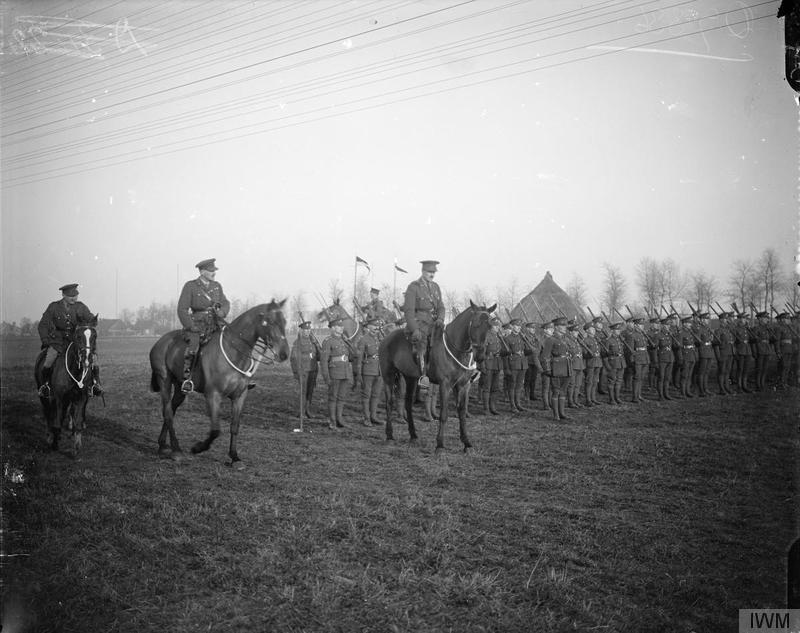Crown Dependencies
The Crown Dependencies are the Bailiwick of Jersey, the Bailiwick of Guernsey and the Isle of Man. Jersey and Guernsey form part of the Channel Islands, an archipelago in the English Channel, and the Isle of Man rests in the Irish Sea to the West of mainland Britain. The isolated nature of these islands did not mean that they avoided the costs of war.
Although they were self-governing, both Jersey and Guernsey sent troops to the front and maintained Royal Militias which provided basic military training for young men. On the Channel Islands, 6, 292 men from the Bailiwick of Jersey and 6, 168 from the Bailiwick of Guernsey served during the First World War. Of those 12, 460 men, 2, 298 gave their lives.
Jersey
General Kitchener’s famous recruitment drive of Pals Battalions grabbed the attention of Jersey and so the Island set about forming its own unit. The Jersey Overseas Contingent of the Royal Jersey Militia, consisting of 230 men, went into active service with the 7th Battalion of the Royal Irish Rifles in March 1915. The Jerseymen spent much of 1915 training alongside the Irish volunteers and left for France in December of that same year.
Jerseymen fought at the Battle of Loos and the Somme in 1916, and at the Battle of Passchendaele in 1917. Having suffered severe casualties at Passchendaele, the remnants of the force fought at Cambrai which was the final action undertaken as part of the Royal Irish Rifles. The Jersey Company were part of the offensive that drove the enemy from the gates of Ypres at the end of September 1918.
The last members of the Jersey Company returned home in 1919. One in four Jersey men who served during the war had died, while a similar number suffered serious wounds. Jersey also housed prisoners of war – the site at Blanches Banques was home to 1, 500 inmates and remained open until autumn in 1919.
Guernsey
The first contingent of more than 240 men left the island in March 1915 and joined the 6th Battalion of the Royal Irish Regiment in 47 Brigade at Fermoy, Ireland.
By April 1916, men from Guernsey were manning parts of the trenches at Loos in France and were subject to a German attack which included the use of chlorine and tear-gas. The Service Battalion of the Royal Guernsey Light Infantry was formed at the end of 1916 as a fighting force in its own right and trained in Guernsey and Kent. The Battalion saw action at the Battle of Passchendaele and Cambrai, and later were tasked with defending the small town of Les Rues Vertes against a German counter-attack for two days where the unit suffered heavy casualties with around 40 percent of the regiment either killed or severely injured.
Guernsey also suffered a serious economic downturn due to a loss of tourism during the war years. A lack of manpower to support farming and the wider agricultural sector also severely impacted the island.
The Isle of Man
The Isle of Man’s booming tourist industry was severely affected by the First World War as many were nervous about the prospect of crossing the Irish Sea and coming into contact with German U-boats. This was exacerbated when the Royal Navy pressed into service 11 of the Isle of Man’s Steam Packet Company’s 15-strong fleet which left the Isle increasingly isolated to the outside world.
Under the Defence of the Realm Act (DORA )the British Government was able to move those it viewed as a threat to British interests to internment camps where large groups of people were confined without trial. These ‘enemy aliens’, as they were called, were usually citizens of hostile powers, namely those from Germany and Austria-Hungary.
The Isle of Man was selected to house the ‘enemy aliens’ in two internment camps, one at Douglas – a requisitioned holiday camp - and the other a purpose-built camp at Knockaloe. The camp at Douglas held around 5,000 but it was Knockaloe that was the largest such camp in the British Isles; its population peaked in July 1916 at 22,769.
Records show that 8,261 men from the Isle of Man (Manx) enlisted in the armed forces, which translated into 82.3% of Manx men of military age joining the war effort. Of the more than 8,000 men who served, 269 of them received honours, 1,165 died and 987 were wounded.


